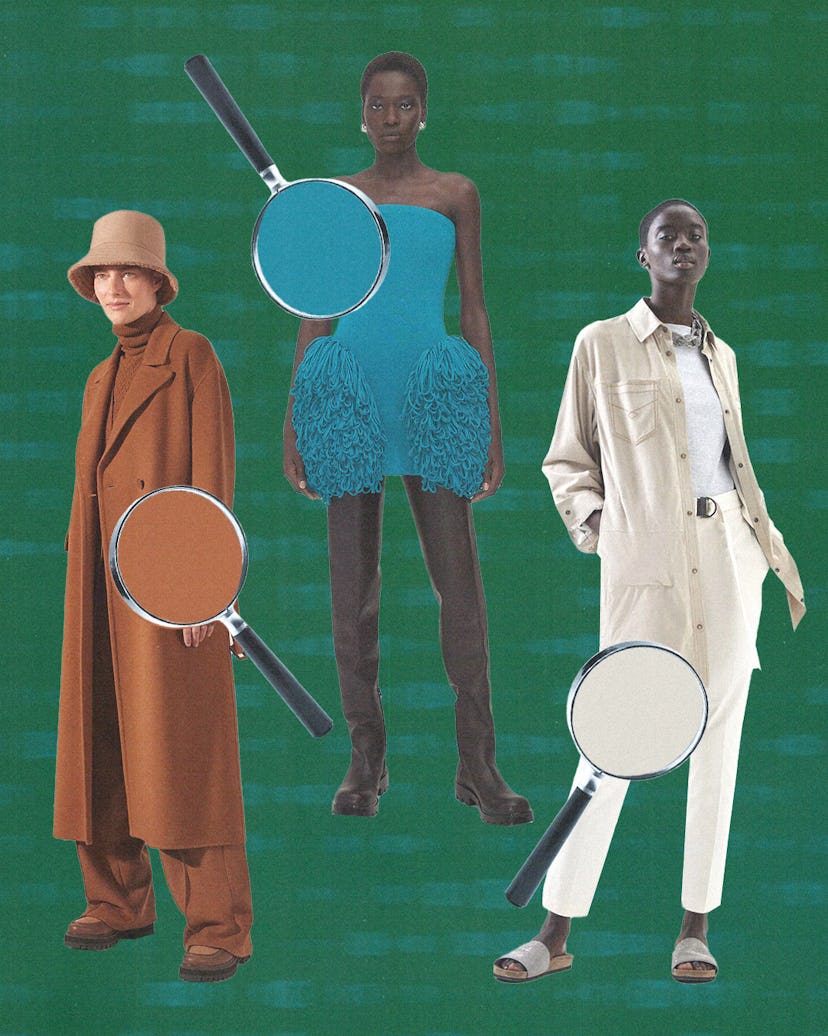The Renaissance of Coded Luxury
In a time of Gucciaga and logomania, quiet luxury still ended the year on top.

In the final days of 2021, right on the heels of the holiday shopping season, Bottega Veneta quietly rolled out a new advertising campaign. Called “Bottega for Bottegas,” the campaign moved the focus away from fashion for the time being—and instead, put a spotlight on some local Italian goods and products. It was a nice way to support small businesses as yet another wave of Covid-19 threatened the existence of mom-and-pop stores. But there also seemed to be another motive within the Milanese brand’s plan. Following the quick and drama-filled exit of former creative director Daniel Lee, who steered the brand toward a more celebrity-focused direction until his departure in November 2021, it seemed Bottega’s new campaign functioned as a step back from the hype. It felt like a reminder to consumers—the storied label is much more than just a producer of the influencer-loved Pouch bag. Bottega Veneta comes from a long history of Italian craftsmanship and care, just like the products they’re now promoting.
With this move, Bottega seems to be making a return to a more quiet existence—and pursuing a re-entry to the world of coded luxury, a category currently ruled by labels like Loro Piana, Brunello Cucinelli, and The Row. These brands produce beautifully made everyday staples—white t-shirts, crewneck sweaters, and tailored blazers often so inconspicuous, they could easily be mistaken as coming from a shop like Gap. They’re for consumers who have a whole lot of money—with understated taste to match. And while coded luxury was previously reserved for those in the know (or, those wealthy enough to drop $625 on a baseball hat), the concept has recently had a bit of a Renaissance in modern culture.
An ad from the Bottega for Bottegas campaign post-Daniel Lee exit, and a head-to-toe Bottega Veneta look worn by Megan Thee Stallion during Lee’s celebrity-filled era at the brand.
TikTokker Charles Gross is partially to thank for this resurgence. If you’re tapped into fashion TikTok, the term “coded luxury” may ring a bell; it was possibly coined (but most definitely popularized) by Gross, who has made a name for himself on the platform with his ASMR-adjacent answers to TikTok’s burning fashion questions. Gross produces content for his over 850,000 followers around fashion news like the failed Chanel advent calendar and the ever-popular Telfar bags, but his videos that promise to inform viewers on “the most expensive brands you don’t know about” are often the ones that get the most clicks. He has opened up the gates of this normally closed-off community to the wider Internet, educating his followers on “The Most Expensive and Mysterious Shoes,” “The Most Expensive Bags You’ve Never Heard Of,” and “The Brands Billionaires Love.”
“The luxury market used to be so padded in this bubble, not only by the brands themselves, but also from buyers,” Gross tells W. “They wanted to prevent certain people from coming in, and make information about the luxury market incredibly limited so that, unless you were in it, you didn’t know anything about it, and information wasn’t readily available.” Part of the allure attached to coded luxury brands is that knowing about them, (and owning them), enters you into a sort of elite club. Of course, it’s human nature to want what we can’t have, or seek out what we’re told we cannot know—which explains why Gross’s followers keep coming back for the inside information. “It’s natural human curiosity,” Gross adds. “If you go to a museum and look at a painting that’s wildly expensive or not even available for purchase, you can still find information on it, no one is gatekeeping that painting from anybody. But, in the fashion world, they’re creating art as well, while saying to people, ‘Well, you can’t know about this because you can’t afford it.’”
A similar concept can be applied to the increasingly popular HBO show, Succession, which gives an inside look into the lives of America’s insanely rich. While Mark Zuckerberg won’t provide even a glimpse at his family vacation, the Roys invite you right onto their yacht during season two.
Unsurprisingly, the Roy men are often clocked wearing pieces from what Gross calls “the Holy Trinity” of coded luxury (Loro, Brunello, and The Row). You can almost guarantee that anytime Kendall Roy is wearing a t-shirt, it’s not Uniqlo as it may originally appear, but Maison Margiela—another one of his understated favorites.
Kendall and Logan Roy, played by Jeremy Strong and Brian Cox, appear in an episode of Succession wearing typically low-profile coded luxury.
But as inconspicuous dressing sees a rise in popularity and interest, conspicuous fashion continues to flourish in its own field. The spring/summer runways boasted bright colors and exuberant patterns. Brands like Prada doubled down on logos, sticking their triangle on the front of almost every look sent down the runway. Versace embraced its roots with colorful metal mesh and showed pieces no one could mistake as being made by any other brand. The trend reports make it clear: it’s the Roarin’ ‘20s and we’re dressing like it.
Unless, you’re not. At this point, there’s something for everyone, and even the brands that love nothing more than a logo are also providing options for their more coded-inclined customers. If you want people to know you’re wearing Hermès, throw on their H-knitted joggers, or their equestrian motif blouse. But if you just want a well-made piece without the attention, the Italian brand also sells a $1,625 sweater that will do the trick. And it seems like, following the drama with Lee, that is exactly where Bottega Veneta wants to be: back in the wheelhouse of well-crafted Italian coded luxury—reminding their more low-key customers that understated, everyday luxury is still available for purchase. No, the Padded Cassette bags aren’t going anywhere, they’re just sharing space with some “if-you-know-you-know” pieces.